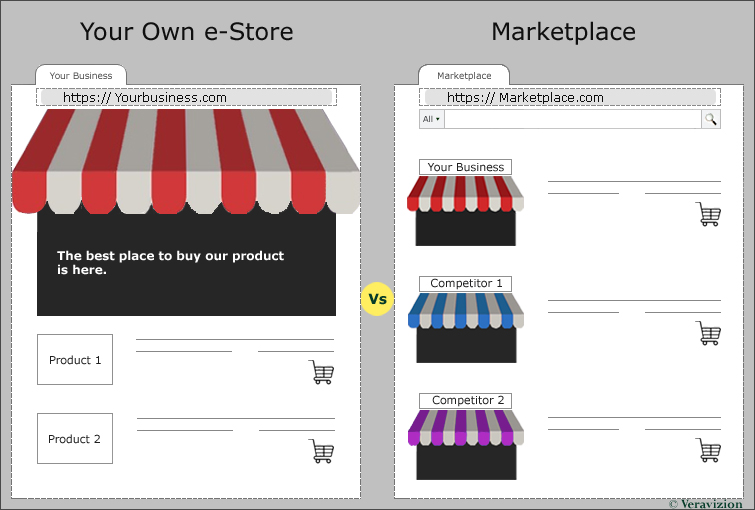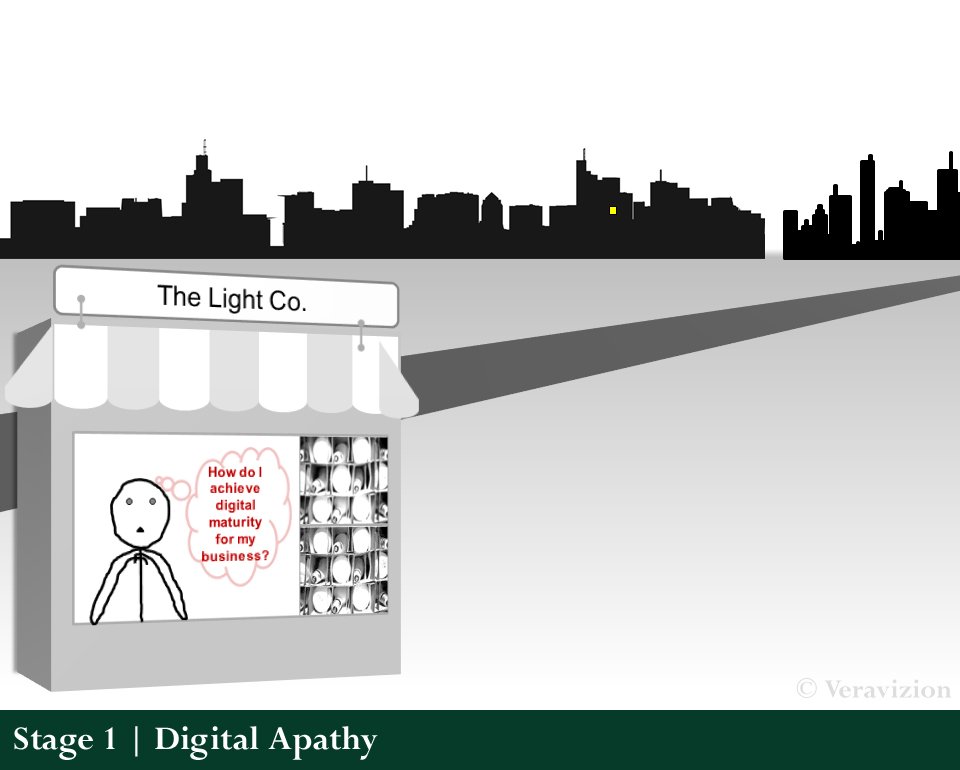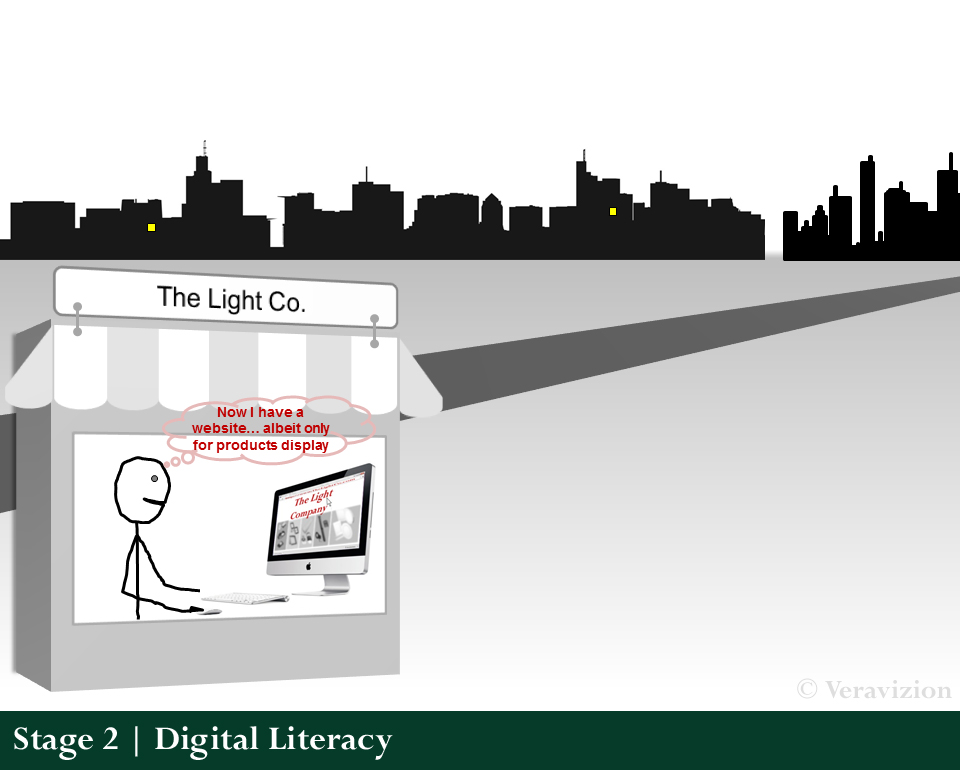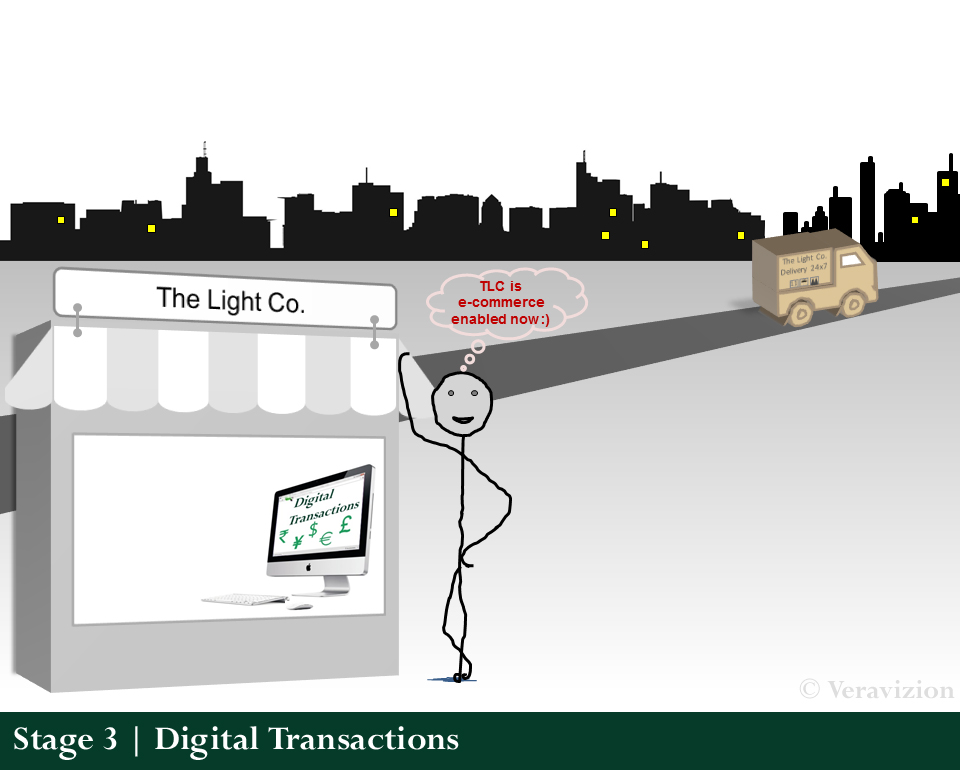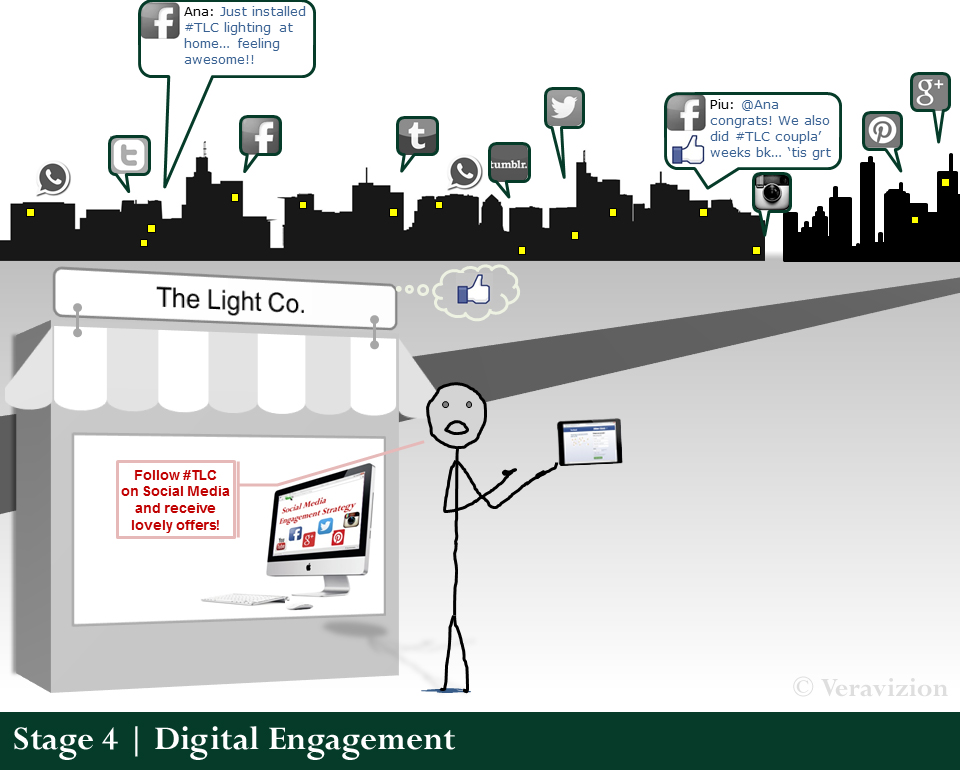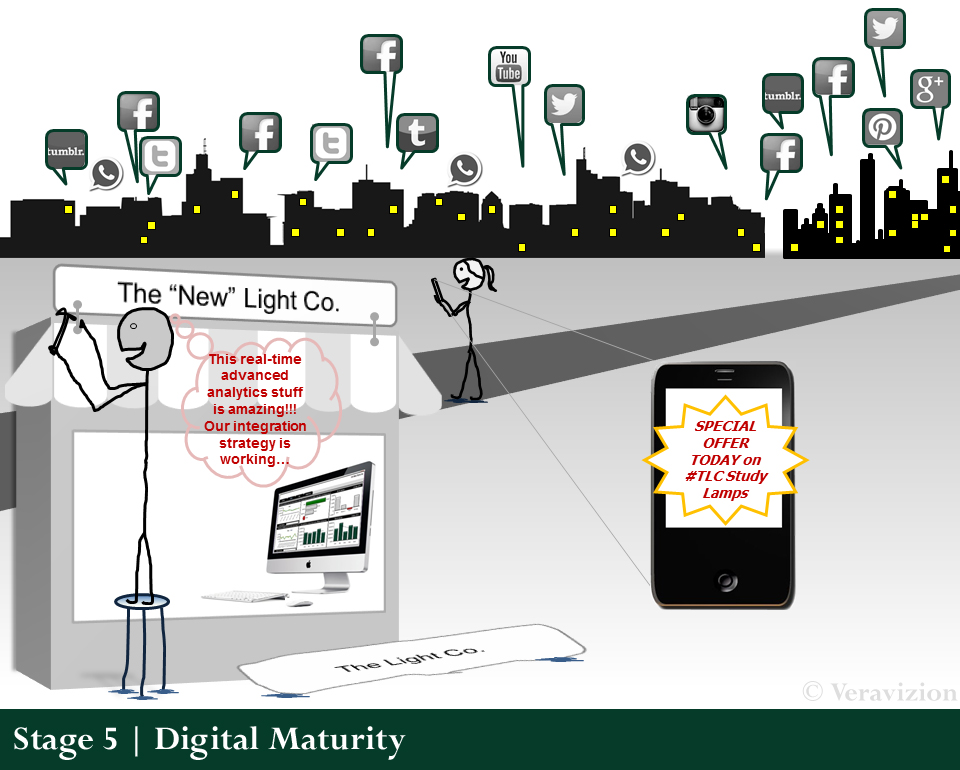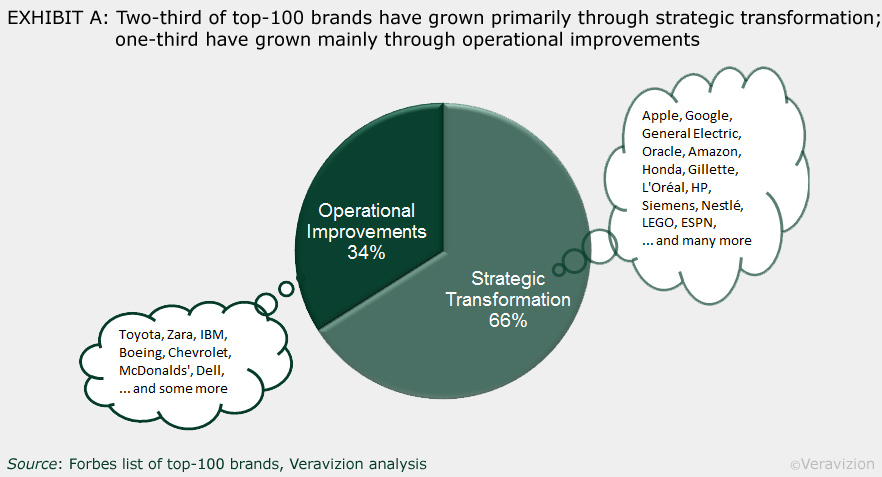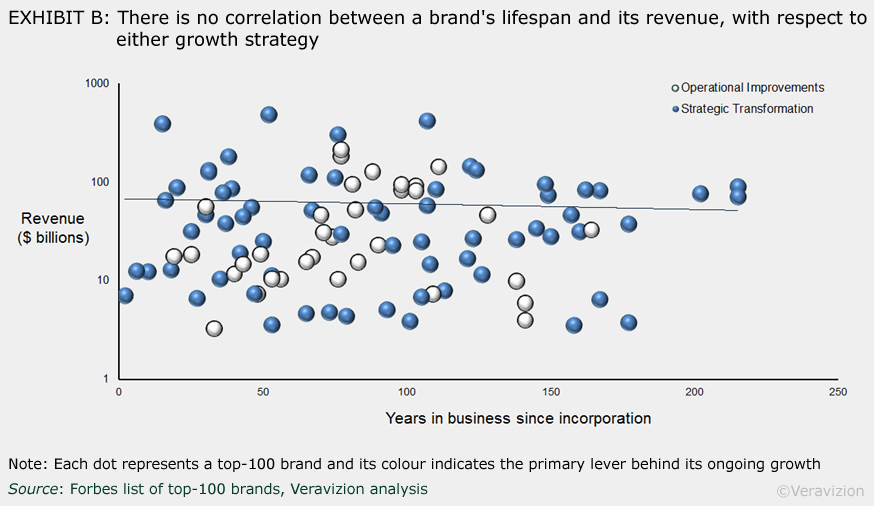Online business growth – the easy way or the right way?
Onine business growth is a topic concerning most retailers. How can retailers grow their business in these times? The key message is at the very end.
Consider this scenario.
You are the owner of a mid-sized retail business. You presently sell your product to your customers in physical stores. A typical sale goes like this: Customers show up at your store. They specify their needs, you give options. You counsel, they choose. You pack, they pay, and you complete the transaction.
Thus far, you have been successful in your current brick-and-mortar model. Your business has a loyal customer base. The net profit margin is in the range of 15%-20%. And, the cash flow is good too.
So, you decide to take your business to the next level.
How would you do it?
The answer is ‘you go omnichannel’.
The internet penetration of above 90% in most developed countries makes it a no-brainer. Among the developing countries, the internet has grown by over 5000% since year 2000 to around 59%. Moreover, customers now prefer to buy in an omnichannel environment.
In omnichannel retail, the focus is on providing seamless shopping experience to the customer across multiple channels. Omnichannel strategy helps you integrate physical store, online store, mobile app, and social media.
In-short, your business growth strategy now revolves around selling online.
To sell online, there are two main options:
- Create your ‘own online channel’
- Sell through existing ‘online marketplaces’
This decision determines the future course of your business.
Let us dissect each option.
Option-1: Create your own online channel
Creating your own online channel includes two things: first, setting up an e-store – an e-commerce website – to display products and receive customer orders. Second, you need to have an efficient and trustworthy logistics system to fulfil the customer orders. The entire order-to-fulfilment process must run smoothly to give customers a seamless shopping experience.
Having your own online channel has several benefits.
Top three benefits are:
- You can create bespoke personalised experience for your customers. It allows you to ensure stronger connection and engagement with them.
- You have total control over your business throughout the customer buying process. So, you decide how customers interact with your brand while being on your website. Also, you can create relevant content around your offerings to engage with target customers.
- Most importantly, you gain direct access to your customers and their data. You can leverage advanced analytical techniques to analyse this data. This analysis can give you crucial insights about the type of visitors, their visiting trends, and their buying patterns. These insights help you decode the online customer behaviour. Using that, you can make appropriate changes to the way you sell online. This data-driven online selling strategy promises to help you grow your online sales.
What do top-brands do?
While it is not a surprise that top brands like Apple, Starbucks, Disney, and Under Armour have their own online channels, most mid-size businesses have also launched their own online stores. It helps them create unique customer experience. The successful ones have implemented advanced analytics to reveal insights about their customer buying behaviour.

However, a common perception among small retailers is that there are a few disadvantages with this option, viz. higher upfront investment, additional analysis and marketing costs, and higher lead-time for online business growth. Perhaps, that is why, almost one-third of small businesses in the US do not have a website of their own.
That brings us to the second option.
Option-2: Sell through existing ‘online marketplaces’
Online marketplaces allow you to sell products without you having to set up your own online store. The marketplaces host many sellers on their website. Marketplaces are popular among buyers because they allow to buy different products across categories without having to leave the site.
The marketplace owns everything on their website. They take care of the marketing too. In return, you pay them product listing fees and a commission on every product sold.
There are many online marketplaces around. A few are global, some are regional, and many of them are national. The popular ones are Amazon, eBay, Flipkart, AliExpress, Rakuten, Etsy, and Target, amongst many others.
Many retailers tend to choose this second option over the first. It seems easier to them. Ostensibly, they see the following ‘advantages’ in this option – no upfront set-up cost, reduced marketing costs, and no waiting for online business growth.
Except, these advantages hide the real disadvantages.
Let us explain by listing out six key disadvantages of ‘selling through marketplaces’ option:
No Upfront cost = Lose control over sales
You don’t incur upfront cost if you don’t invest in your own e-commerce set-up. Instead, you use the marketplace’s infrastructure to sell. You use their e-commerce applications, their algorithms, and their processes. You depend on them for the sales.
Sure, the sales can increase, but you may not know why. [GE executives recall how Mr. Jack Welch would get angry when the sales went high and they couldn’t explain why.]
In a way, you lose control over your sales process and data to the marketplace.
Why is it a big problem?
Because, if the sales go down, you would be clueless about it. And so, would not know how to fix the problem.
Let us see an example of what it means by not having control.
When you are selling on marketplaces, you cannot control what products are being sold beside yours. Worse, what if the other product looks identical to yours but is from your competitor. Worse still, what if the other product being sold has the same brand-name as yours, but in altogether different category.
It DOES happen!
Here is a real example* of a brand selling at one of the top marketplaces:
The organic soft-cotton baby onesie, is selling alongside
woman’s cocktail dress of the ‘same’ brand-name (but from a competitor); selling alongside
motor flush oil of the ‘same’ brand-name; selling alongside
a music label of the ‘sam-e’ brand-name
– all of them in the same window.
And you cannot do anything about it.
Reduced analysis and marketing costs = Risking business survival
Generally, marketplaces own the data on your product sales. The minute a retailer signs up to a seller’s account on a marketplace, they give permission to the marketplace to use their sales data however they choose. Most marketplaces don’t share that data back with the sellers.
So, in reality, when you choose to sell through a marketplace, you don’t just pay listing fees and a commission per transaction. You also pay with your sales data, and future sales.
[I would re-read that last sentence to let it sink in.]
Marketplaces can use your sales data to gather your customer intelligence. They can leverage it to offer your customers better deals through their in-house labels.
Sellers have shared stories about how this has impacted their business.
In short, you risk losing your loyal customers to your competitors if you do not leverage your sales data yourself.
No waiting for sales-success = Less opportunity to build your brand
Online marketplaces try to make the seller onboarding process easy to bring more offline sellers on their e-commerce platform. They try to make it smooth and quick. You can start selling in a few days [and you may stop selling in fewer days if you violate their policies].
Not just that, you may also start realising sales quickly on marketplaces. However, the presence of many other products makes it difficult for consumer to register your brand among so many others in their minds.
You are successful quickly = Threat of getting undercut on prices
If you start doing really well, someone will notice and one of the two things may happen – they may offer to buy you out or they may undercut you on price and terms, eventually killing you.

Remember Zappos? Zappos was extremely customer-centric, very successful. It was the first company that sold shoes online, at scale. They put a lot of importance on understanding shoes, their culture and customer centricity.
When Amazon wasn’t going anywhere with its own online shoe store, Endless.com, they made their first attempt to acquire Zappos in 2005. Zappos declined. What happened later is not up in public domain. However, Amazon eventually acquired Zappos in July-2009.
Hyper-competitiveness – Forced to sell on price, not differentiation
Conservative estimates put the number of active sellers on Amazon at 2.3 million as of 2019. Chances are, many of them are selling the same products as you do. This makes it difficult for you to compete, if you do not have aggressive [read: less] pricing, that helps the algorithm pick your product ahead of the competitors’.
Diapers.com may be the case in point. They built a $100 million business selling diapers online. They offered free delivery of diapers and other products to parents. But they couldn’t sustain the competitive pressures and ceased to exist in 2017.
Restrictive TnC on how you can communicate with customers = Limits brand building
There may be marketplace limitations on how your business can brand and communicate itself on the marketplace. Moreover, any slightest hint of violating the strict policies will earn you the dreaded ‘seller suspension’ message.
Does that mean marketplaces are bad?
NO! Not at all.
In fact, they have disrupted some aspects of retail for the better.
For example, online shoppers love Amazon. Amazon is allowing them to have wider selection, shop-anytime-anywhere convenience, and enjoyable shopping experience, all at a cheaper price. They have developed a world-class e-commerce platform over the years.
Marketplaces can be good for small retailers, that do not have resources to have their own e-store. Also, marketplaces may be useful for those businesses not aiming to create an enduring brand.
But they may not be for everyone.
You need to figure out whether marketplaces are right for you.
Then, what is the way forward to online business growth?
Companies are waking up to the risk of increasing their dependency on marketplaces. More and more mid- and large-sized companies are embracing “direct-to-consumer” sales model.
Almost all large businesses and brands have their own e-commerce stores. Some of them were tempted initially but then recovered themselves from increasing their dependency on the marketplaces.

Nike is one such example. Recently, Nike confirmed to CNBC that it will stop selling merchandise directly to Amazon, as part of its push to sell more directly to consumers.
To quote CNBC, “Prior to 2017, Nike had resisted such a deal with Amazon, focusing its attention on its own online marketplace and stores. The fear for many brands has always been that, by partnering with Amazon, a company loses control over how its brand is represented on the site.”
This Veracle makes a point that mid-sized businesses should strive to have their own e-commerce set-up. They should attempt to leverage their sales data using analytics. This could be the right way for their online business growth.
What do you think? Have you seen a mid-sized business struggle with this dilemma?
Related Posts:
- Strategic Transformation Part-1
- Is business strategy really indispensable?
- Are you survival-oriented or a growth-oriented executive?
<– Know customer shopping behaviour KPIs in e-retail?
e-Retail Innovations – How e-Retail is Changing? –>
*name withheld on request.
Cover Photo courtesy: Pradnya Design Consultants
If you liked reading this article, then please subscribe to our blog – Veracles. That way, you can receive such interesting insights in email.
Also, please do follow Veravizion on LinkedIn, Twitter or Facebook to receive easy updates.
